Introduction
If you’re even a little bit into professional/competitive gaming, you’ll know the Logitech G Pro X Superlight. Ever since its launch, the mouse (which was the successor to the G Pro Wireless) has been the most used mouse in professional gaming by a big, big margin. This line of mice has been in the hands of hundreds of professional players and has helped win a ton of tournaments, so it’s only natural that the successor was hotly anticipated. Read our full Logitech G Pro X Superlight 2 review to find out whether or not Logitech has managed to meet expectations!
Also read: The Rise and History of the Logitech G Pro Wireless/Superlight
At A Glance
Logitech G Pro X Superlight 2
Used by 278 players ()Logitech played it safe with the Logitech G Pro X Superlight 2, but that’s understandable. It’s a new version of one of the most-loved mice in all of professional gaming that introduces a couple of tweaks to bring Logitech’s flagship offering in line with today’s mouse standards.
Pros
- Super safe shape that’ll fit anyone
- Nice coating
- Extremely reliable wireless and sensor performance
- Addition of USB-C charging and optical switches addresses the two most commonly heard complaints about the GPX
- Sensor calibration tool in G HUB is really handy
- Good battery life
Cons
- Clicks feel heavier than on earlier versions, which might not sit well with everyone
- Bottom skate has a different shape, which feels like an unneeded change
Specs
| Sensor | HERO 25K |
|---|---|
| Polling Rate | 125 / 250 / 500 / 1000 / 2000 / 4000 / 8000 Hz |
| Button Switches | LIGHTFORCE Hybrid |
| Button Force | 98.4g |
| Connection | Wireless |
| Shape | Ambidextrous |
| Length | 12.42cm |
| Height | 3.96cm |
| Weight | 59g |
| Width | 6.06cm |
Usage Over Time In The Pro Scene
First Impressions
Packaging
Inside the box of the Logitech G Pro X Superlight 2, you will find:
- Mouse
- USB-C charging cable
- Documentation and quickstart guide
- Cloth
- PTFE puck
- USB receiver
- USB receiver extender
- Mouse grips
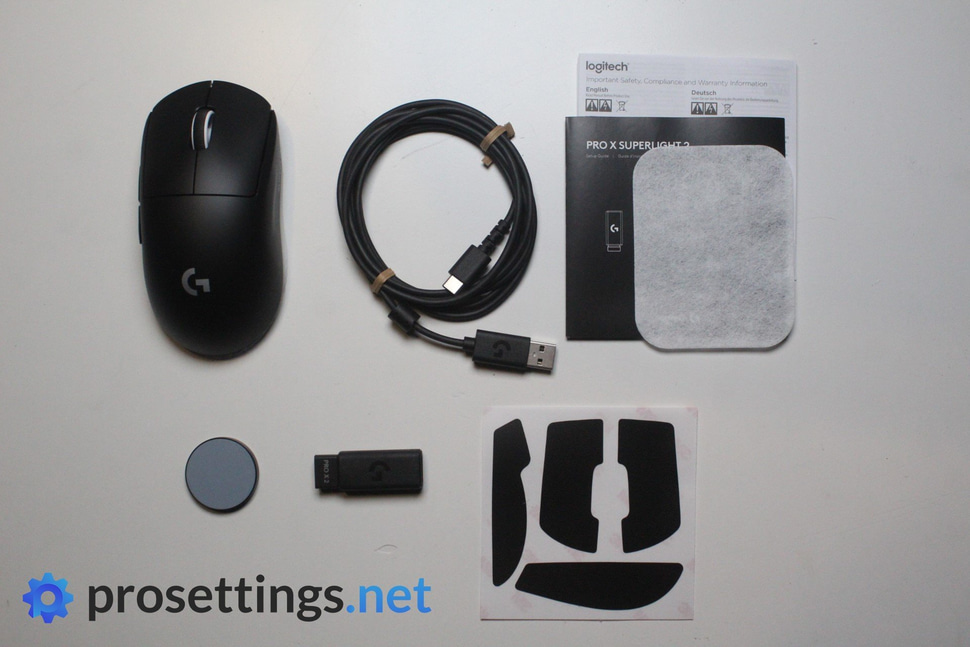
The Mouse
When you first grab the Logitech G Pro X Superlight 2, there’s almost nothing telling it apart from its predecessor. In fact, the side of the mouse still says ‘Superlight’ instead of something like ‘Superlight 2.0’. The only way to know which version you’re looking at is by taking a quick peek at the skates and the charging port, as the Superlight 2 has a USB-C charging port (a welcome change) and a slightly differently shaped back skate (a not so welcome change).
Did They Change Enough?
When the G Pro X Superlight 2 was properly announced, there were some sighs in certain sections of the community. Logitech, according to some, played it far too safe and didn’t innovate enough with this latest version, but I completely disagree with that notion.
The Superlight’s dominance in the professional gaming scene is mind-blowing, and whether you personally like the mouse or not: it can’t be denied that it is absolutely loved by professionals. Ever since the release of the G Pro Wireless (the predecessor to the Superlight) these mice have been on or near the top of our ‘most used’ lists, to the point where the Logitech G Pro Superlight is the de facto ‘standard issue gaming mouse’ in the pro shooter scene.
For reference: at the time of writing, well over 25% of all analyzed pros on this website are using the Superlight, despite many lighter and more feature-packed competitors being available.
Logitech would be incredibly silly to throw away such a dominant lead over their competitors by releasing a drastically different successor, so I completely understand that they played it safe and merely updated their well-loved design so that it’s up to modern mouse standards. Changing it up too much might’ve caused pros and regular players to feel unfamiliar with the newest iteration, thus forcing them away from the mouse.
With that being said, let’s get on to the Logitech G Pro X Superlight 2 review.
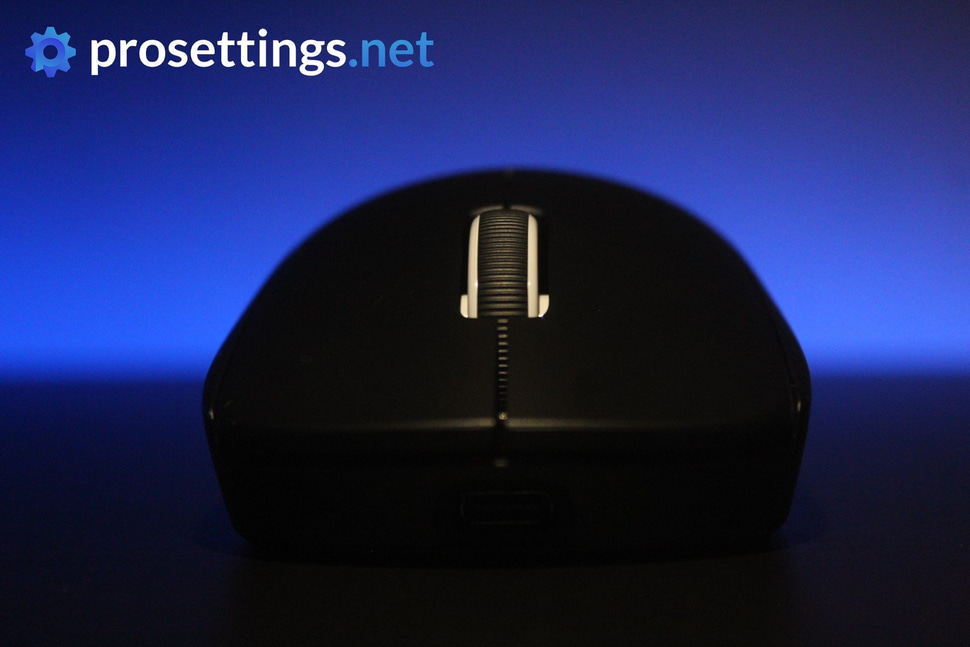
Shape, Coating, and Mouse Feet
Safe Shape
The shape of the Superlight remains the exact same. There are no differences between the Superlight 2 and its predecessor.
What you get here is an extremely safe shape that truly follows a ‘one mouse fits all’ type of design. The hump is situated towards the middle and is extremely gradual, and while there is a tiny bit of a flare at the back and an indentation near the middle, it’s all very gradual and neutral. A bit of overhang near the front helps with picking the mouse up and there are very subtle comfort grooves on the main buttons, but that’s pretty much everything you can say about the shape. It’s safe and neutral.
Is this a bad thing? No, not at all. If you want to get yourself a mouse that you will almost certainly enjoy using without any comfort issues, this is the one for you. Despite the fact that I myself prefer more ‘shaped’ mice (I’ve also been gravitating towards ergo mice again) I can always pick up a G Pro Superlight and play with it without any issues whatsoever. No matter how many other mice I’ve tested and reviewed and no matter how long the GPX has been sitting in my drawer: once I pick it up I feel right at home.
The shape is simple, reliable, and extremely accommodating, and that’s definitely one of the mouse’s main strengths.
The shape also allows you to employ a variety of grips without any issues. You’re not locked in and the mouse doesn’t guide your fingers towards certain grooves or spots. This means that you can easily adjust your grip on the fly to go for a more aggressive grip when you’re doing fine aiming tasks, for example.
All in all, this obviously won’t be the mouse for people who prefer specialized shapes or employ a really uncommon grip style, but it’s hard to image someone actively disliking this shape to the point where it interferes with performance.
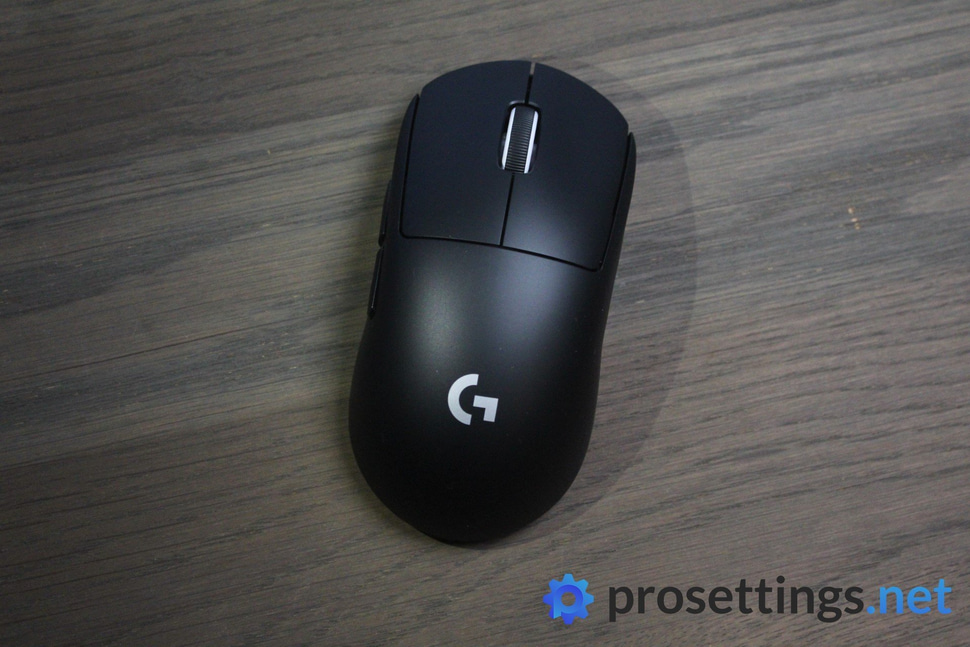
Coating
The coating on the Logitech G Pro X Superlight 2 is great. It does its job without any issues and is always sufficiently grippy for me. It doesn’t matter if I’m still warming up my cold hands at the start of a playing session or sweating bullets trying to pull of a miraculous clutch: the coating does not disappoint.
Other than grip and performance, the feeling of a coating is also extremely important to me, and the G Pro X Superlight 2 delivers here as well. It handles sweat and fingerprints really nicely, which leads to a mouse that doesn’t need a lot of cleaning or maintenance.
Mouse Feet
The stock skates continue the overall design idea of the Superlight 2: they’re kind of a middle ground when it comes to speed and are unlikely to offend anyone. They’re decently smooth right out of the box, but on rougher pads such as the ZOWIE G-SR II (see our ZOWIE G-SR II review) there was some scratchiness going on if I applied some extra pressure to the mouse. If you use those types of pads you might want to look out for replacement feet if you’re sensitive to this kind of stuff.
Speaking of replacing: you’re not going to be able to use your old Superlight skates, as Logitech has opted to make a slight change to the bottom skate (this is now straight at the ends instead of slightly bent) and that’s an odd decision to me. At first I thought they made these changes to accommodate the magnetic puck on the bottom, but then I tried the puck that’s on my old GPX and it fit perfectly, so it can’t be that. The skate design has also barely changed, so I doubt it has a big impact on the overall glide. A puzzling change.
I’m not someone who uses aftermarket skates religiously, so this doesn’t bother me, but if you’ve got a big stash of replacement feet for your GPX lying around this change will be an unwelcome surprise.
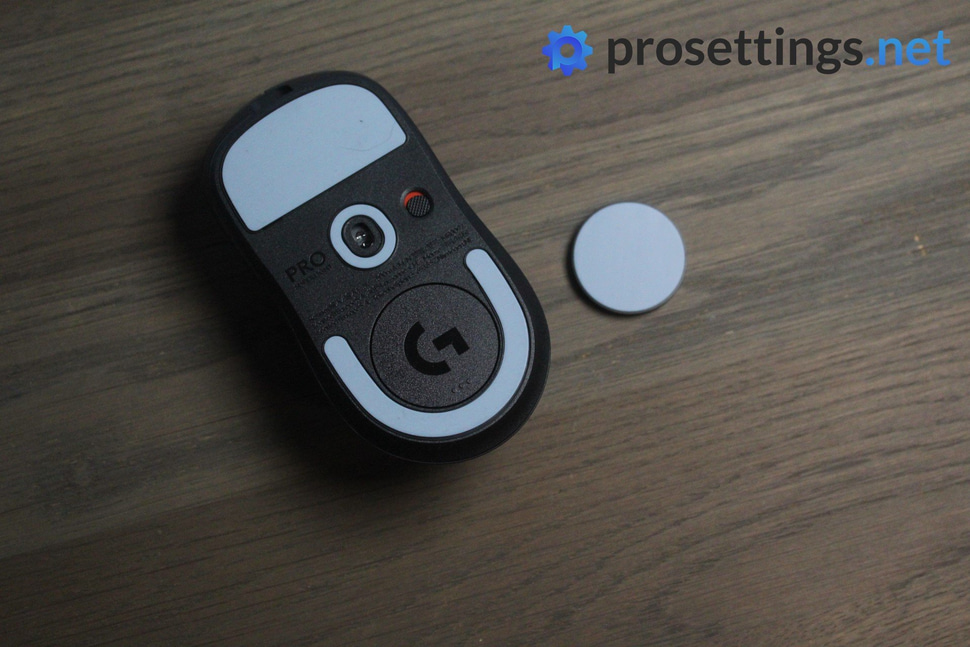
Recommended Grip Types
The Logitech G Pro X Superlight 2 should fit all grip types due to its extremely safe shape. It might not be ideal for fingertip grippers with smaller hands, but other than that it accommodates pretty much anything.
Buttons and Scroll Wheel
LIGHTFORCE Switches
Keeping up with current market trends, Logitech has put optical switches in the Superlight 2. These have a number of advantages: they won’t develop accidental double clicks, they last longer, and they’re (theoretically) faster. If you want to learn more, you can read our article on optical mouse switches vs mechanical mouse switches, but in short: this is -objectively speaking- a very positive change.
Subjectively, there’s a thing or two to say about these LIGHTFORCE switches. The most important factor is the tensioning. The switches on the Superlight 2 feel a lot heavier than the ones on the first version, and testing confirms that. The clicks on the Superlight 2 require around 96 grams of force to actuate, whereas that was just 66 grams on its predecessor. This is a big difference, and even though one could say that testing doesn’t mean everything (and I’d agree) this can also very clearly be felt when gaming with the mouse.
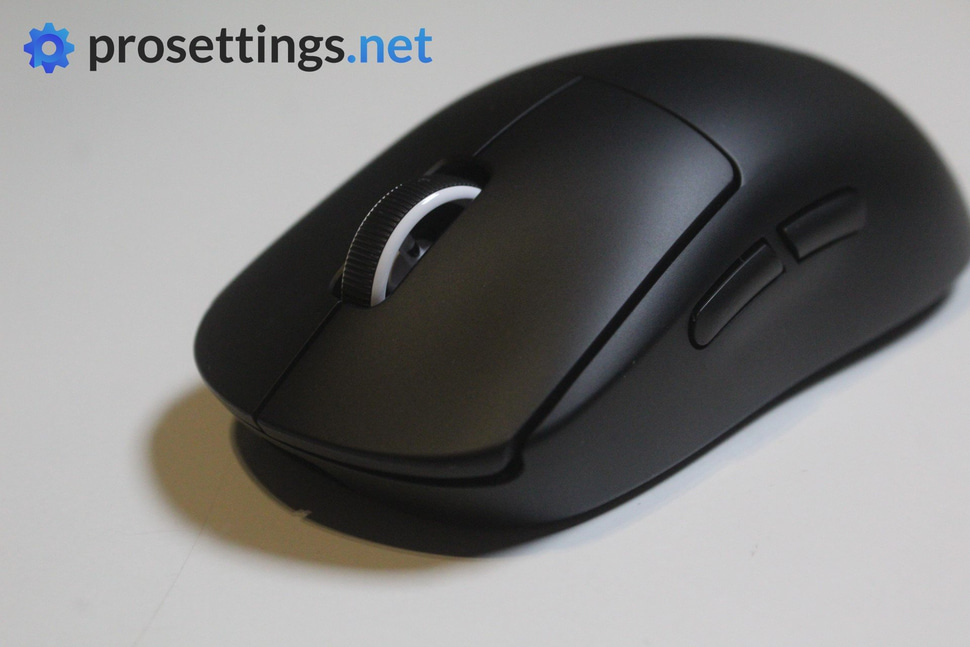
Click Implementation
The clicks on the Logitech G Pro X 2 Superlight are robust and heavy. That’s not a bad thing since some people like stiffer switches, but if you like the click tensioning on the original GPX this might be difficult to overcome.
The implementation is great. There’s no noticeable pre- or post travel, no switch grinding after pressing a button, and no sideways movement either. The clicks have a tactile and crispy actuation, with a deep sound once the switch activates. This is a departure from what we had on the original GPX, where the switches sound a lot lighter and higher pitched.
Whether or not these switches are an improvement will come down to your personal preferences. Objectively speaking, these LIGHTFORCE switches are a lot better than the switches used in the original G Pro X Superlight due to the fact that they’re optical switches. Subjectively, it’ll come down to whether or not you prefer more tactile mouse switches.
Scroll Wheel
When compared to the wheel on the original GPX, this one makes less noise and feels slightly lighter to scroll with. If you like a very crispy wheel with a lot of definition then this might be too loose for you, but I feel like there’s just enough definition between each step to make this usable for all ingame applications.
The wheel itself is grippy and doesn’t miss any steps. The tensioning required in order to click the wheel itself is just right if you ask me, as I had no issues with accidental clicks while scrolling, nor did I accidentally scroll when I wanted to push the wheel.
In essence, the scroll wheel follows the trend that the entire mouse follows: it’s kind of ‘in the middle’ and doesn’t trend towards one side. It’s neither very rigid nor is it very loose.
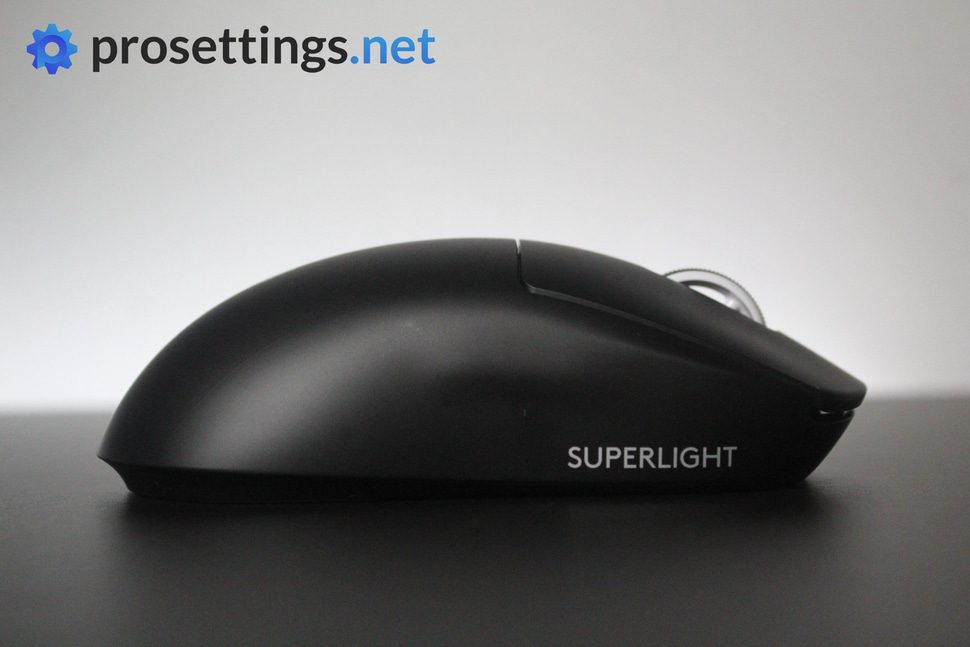
Side Buttons
The side buttons actuate with a high-pitched and rather noticeable click and are easy to reach and distinguish, but there’s a little bit of post-travel involved, especially if you tend to press down hard on them near the edges.
Compared to the first Superlight, the side buttons feel almost the exact same, so I don’t think any big changes were made here.
Build Quality
Being around 3 grams lighter than its predecessor (nothing wrong with that; around 60 grams is the sweet spot for many people) I don’t think that there were very many structural changes under the hood. The Logitech G Pro X 2 Superlight is built like a tank, just like its predecessor.
There is nothing to be heard when I shake or tap the mouse, and I can press it anywhere I want without the shell flexing. This mouse feels extremely reliable and solid when I hold it in my hands, and I have no doubt that this could survive a couple of rough trips to a local LAN party. There’s also no creaking when squeezing the edges, and even though I can’t say how it’ll hold up after months of heavy usage (I don’t get that much time with review products) I can say that it feels as if it’s new after weeks of testing.
Sensor and Everyday Performance
HERO 2 Sensor
The Logitech G Pro X Superlight houses the HERO 2 sensor, and that one isn’t just a higher dpi (What is DPI & eDPI?) rebrand.
Sporting polling rates (What is Polling Rate?) of up to 2000Hz, this sensor brings Logitech mice to 2023 and beyond. The sensor performance is stable and, as expected from Logitech, the wireless connection is flawless.
Due to the existence of wireless mice with polling rates that go beyond 2000Hz, this technically isn’t the fastest or most cutting edge sensor on the market, but in reality we’re talking of extremely thin margins here. Is a mouse at 8000Hz smoother feeling when tracking objects (on a high refresh rate monitor and a great PC) ingame? Yes, slightly, but in all honesty I doubt I would be able to tell them apart in a blind test.
That’s not to excuse Logitech: 4000Hz is kind of becoming the new norm in gaming mice, so I hope that they’ll add that as an option later on, but I don’t really think that 4000Hz vs 2000Hz is going to make anyone a drastically better gamer so I wouldn’t skip this mouse based on that alone.
As far as I can tell, everything is implemented properly on my copy, so for me the HERO 2 sensor is a hit.
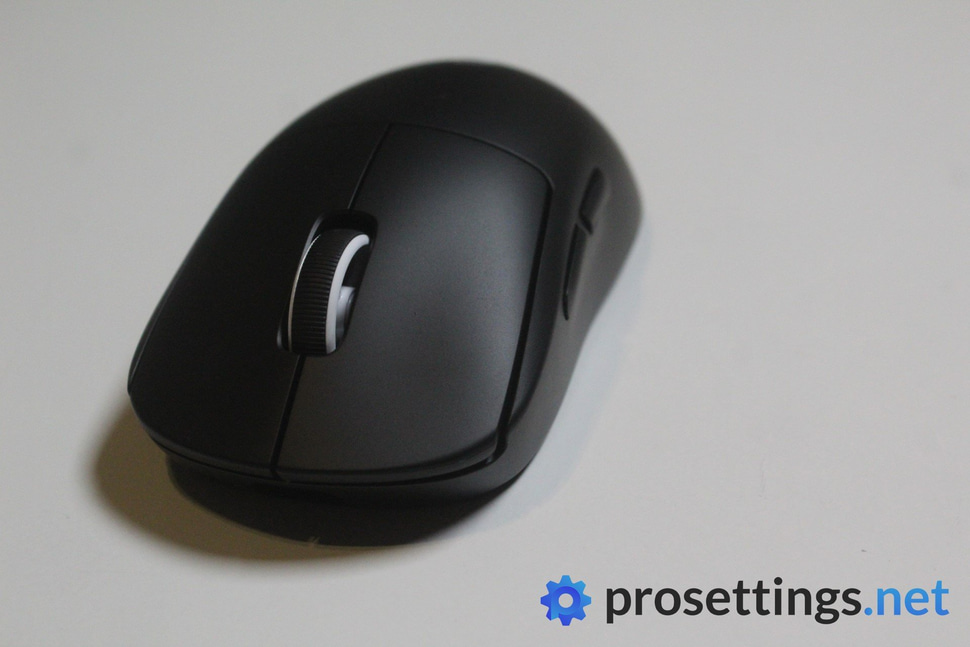
Logitech G HUB
If you want to configure the Superlight 2, you have to go via Logitech’s G HUB (What is Logitech G HUB?) software. Despite the fact that I think it’s a bit of a confusing program these days when you want to do stuff such as save a profile to the onboard memory, there are some cool new features to be found if you toggle the ‘advanced’ checkbox in G HUB.
For starters, there’s the fact that you can set different DPI values for the X and Y axis. I don’t personally use this, but if you’re someone who tends to raise/lower your cursor when doing large flicks this might come in handy.
You can now also change the LOD (What is LOD?) of the mouse. There are three modes to be found: high, medium, and low.
Finally, there’s also the sensor calibration tool, and this is a feature that I really liked. With this, you have to place your old mouse against to the Logitech G Pro X Superlight 2 and move both mice at the same time. G HUB will then calculate the actual DPI of the source mouse (there’s always going to be some DPI deviation in mice; this is practically unavoidable) and match the G Pro X Superlight 2’s DPI to it. This shortens the break-in period when switching mice, and even though it’ll only be a ‘one and done’ type of setting for most people, it is a cool feature if you ask me.
PowerPlay
In case you were wondering, the G Pro X Superlight 2 is compatible with PowerPlay. If you have a compatible mousepad made by Logitech, your mouse will charge while you are gaming. This, in theory, gives the mouse unlimited battery life, though you will have to connect the PowerPlay mousepad to a power source. I personally don’t use PowerPlay and I don’t see a ton of pros use it either, but it’s a nice thing to have in case you’re into that kind of thing so I’m not against its inclusion.
Dongle Storage
Nested in between the bottom skate, there’s a magnetic puck. If you remove that puck, you’ll see that there is space to store the wireless receiver. I love it when brands include a way to store a receiver inside the mouse itself, as these things can easily get lost. It’s not an absolute must for me, but it is a nice extra and something that I appreciate about the G Pro line of mice.
There’s a replacement puck in the packaging that’s covered in PTFE so that you can give the back end of the mouse a larger gliding surface, but I didn’t notice a massive difference between the two configurations.
Battery Life
At its fastest configuration (2000Hz and using the Optical Only feature on the switches) you’ll get around 51 hours of ingame battery life. You can raise this by enabling the Hybrid feature for the switches in G HUB and lowering the polling rate to 1000Hz, but that increases the latency. Since this is a premium performance mouse aimed at competitive gamers this is not something I would recommend, so I consider the battery life to be ~51 hours.
If you use the mouse for both work and pleasure, lowering the polling rate to 1000Hz and using the Hybrid functionality for the switches will almost double the battery life to around 95 hours, so if you’re going on a trip or you’re at a LAN and you don’t have a charging cable present, this can be good to know.
A USB-C cable is used to charge the mouse. This sits in a recessed part of the mouse shell so cables with a thick connector bit won’t fit, but I tested it with three USB-C cables from other brands and they all fit perfectly, so I don’t expect too many issues here. This was one of the most hotly anticipated changes, and it’s a relief to finally be able to bin that Micro-USB cable that had to be kept around to charge the old Superlight.
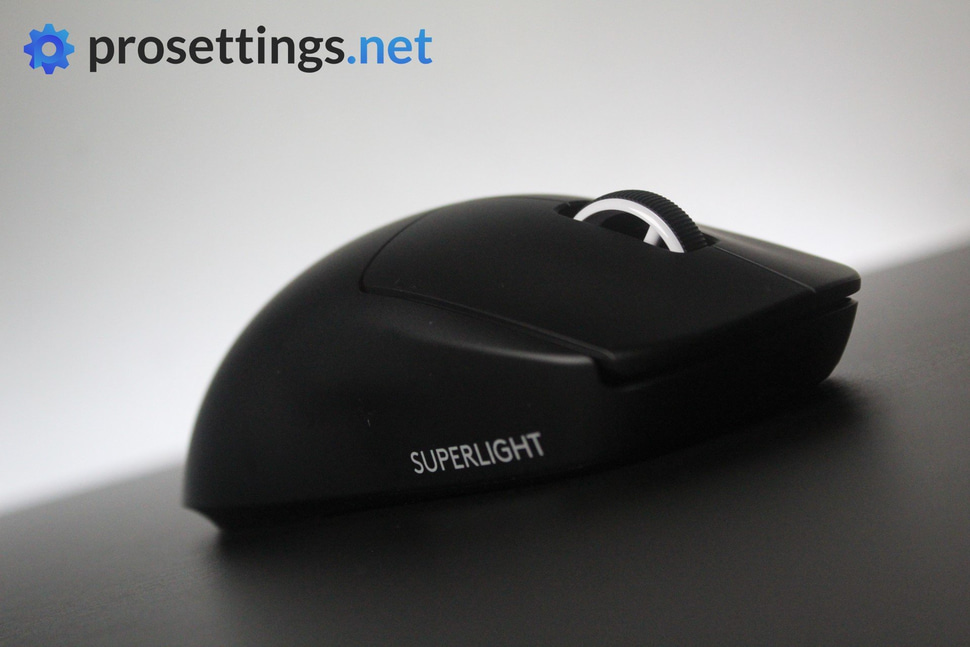
Alternatives
Considering the massive success and mainstream appeal of the Logitech G Pro X Superlight, there have been a number of companies who have copied its shape. If you are looking for an alternative to the G Pro X Superlight 2, however, I would recommend either the first version of the Logitech G Pro X Superlight or even the Logitech G Pro Wireless. Both are still on sale and the G Pro Wireless presents an excellent ‘value’ alternative while the Superlight is a great ‘casual’ version of this more cutting edge product.
Conclusion
Logitech played it safe with the Logitech G Pro X Superlight 2, but that’s understandable. It’s a new version of one of the most beloved mice in all of professional gaming that introduces a couple of tweaks to bring Logitech’s flagship offering in line with today’s mouse standards. It does so without touching the things that made it so popular in the first place. A completely logical, if somewhat ‘boring’ (for lack of a better word) decision.
It’s not the most exciting release of the year, but it doesn’t have to be. Its predecessor was still on top of the game despite numerous more technologically advanced rivals hitting the market, so Logitech would’ve been silly to make drastic changes to its overall design.
The Superlight 2 is one of the most reliable gaming mice on the market, and if you’re looking to buy your first gaming mouse and/or you prefer a mouse that performs at extremely high levels without any features or design choices that might rub people the wrong way, this is it. It’s the standard in professional gaming for a reason, and you can’t really go wrong with the Logitech G Pro X Superlight 2.
This product was received for free from the manufacturer and given to our reviewer to test and review. Brands and manufacturers have no editorial control over our reviews. For more information, check out our review FAQ.


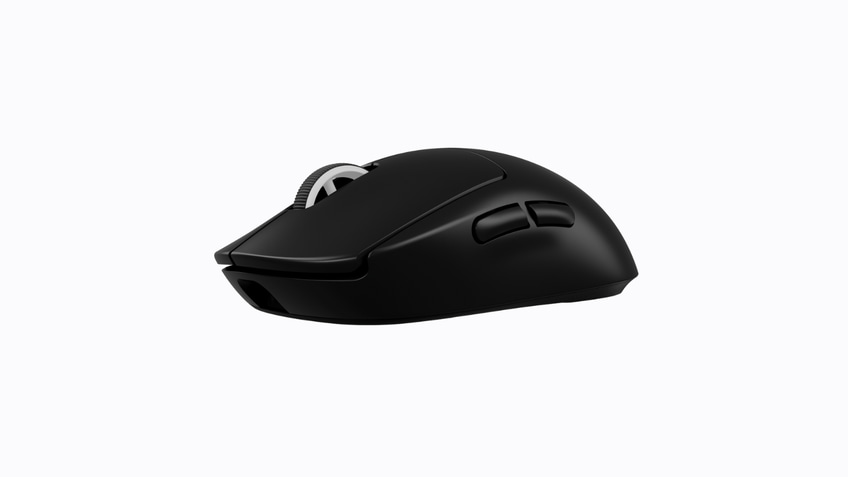






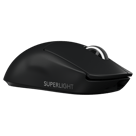


Can you recommend some high quality mouse feet for the superlight 2? I want to replace the stock feet.
To be completely honest I don’t have a ton of experience with aftermarket skates. When I want to replace skates I just go for Corepads or Tiger Ice. I’ve also used some X-raypad Obsidian skates recently and enjoyed those, but I do prefer the Corepads and Tiger Ice skates. That’s about the extent of my in-depth knowledge on aftermarket skates, so I’m not the most knowledgeable source on aftermarket mouse skates.
Thank you for your reply. I think I will try the Corepad pro skates.